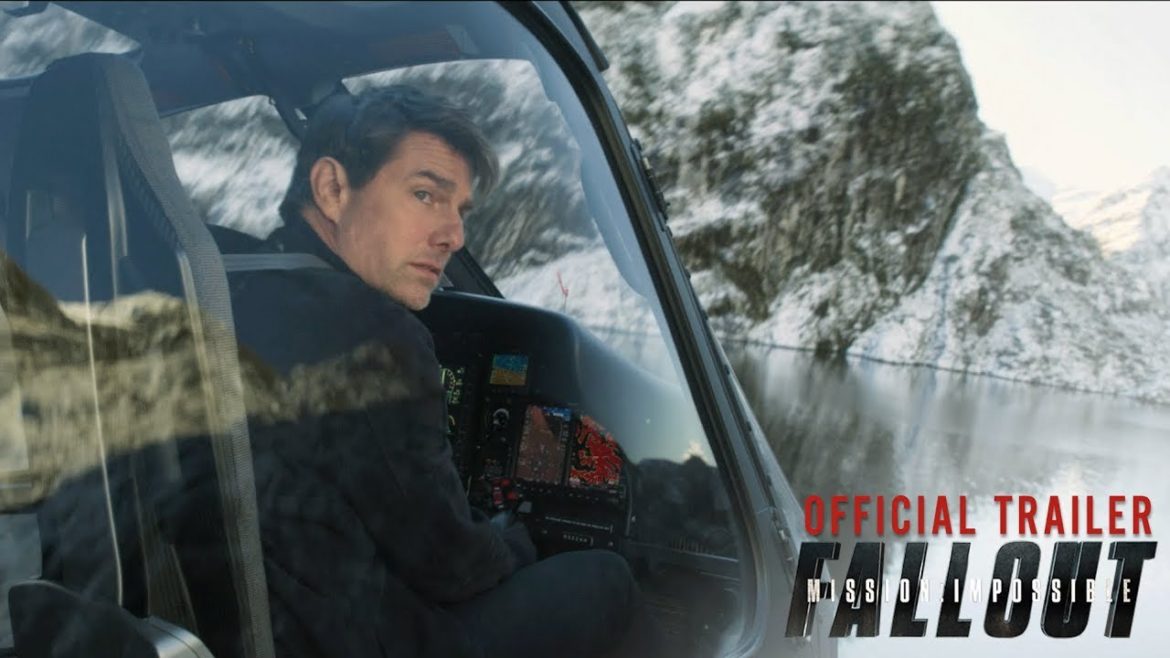TL;DR
After a shaky start with the first two films, the Mission: Impossible franchise found its footing with M:I-3 and has been on an upward trajectory ever since. Mission: Impossible - Fallout, the sixth installment, delivers absolutely breathtaking, authentic stunts performed by Tom Cruise, coupled with a relentless pace and a fantastic ensemble cast. While the plot gets a bit convoluted and the runtime is on the longer side, the sheer spectacle and the return to the team-oriented spirit of the original series make this entry a standout. Discover if this film truly lives up to the hype and the series' resurgence – read the full review to find out!
I’ve always been a fan of Mission: Impossible. I appreciated the original series from 1966-1973, and was pleased when the series returned in 1988 for two years, concluding in 1990. Peter Graves reprised his role as the leader, Jim Phelps, and I was enthusiastic when a movie adaptation was announced. One of my favorite TV series was being adapted into a film! Then the film arrived…
The year was 1996, and Brian De Palma’s feature film proved to be a considerable disappointment. It bore little resemblance to the series. The character of Jim Phelps was present, portrayed by Jon Voight, and the central role of Ethan Hunt was played by Tom Cruise – an actor whose work I didn’t particularly appreciate during the 90s. SPOILER ALERT for the few remaining viewers who haven’t seen the first film; skip the next section to avoid spoilers.
In the initial film, the entire team is eliminated, leaving Tom Cruise’s character, Ethan Hunt, as the sole survivor. Subsequently, it is revealed that Jim Phelps himself is the antagonist. The producers had even considered casting Peter Graves in the role, having him betray and eliminate his own team from the TV series. Fortunately, he declined, allowing me to largely disregard this deeply unsatisfying conclusion to the original series.
Four years later, another installment arrived. This time, John Woo took the director’s chair, with predictable results. The film is a two-hour-long, slow-motion-laden experience, as absurd as Tom Cruise’s hairstyle in the movie. Mission: Impossible II also deviated significantly from the spirit of the original series. The core concept of Mission: Impossible is the team, operating collaboratively against seemingly insurmountable challenges. However, both the first and second films centered almost exclusively on Ethan Hunt.
Mission: Impossible seemingly faded into obscurity. Six years passed before a third film was announced, and my anticipation was considerably diminished. Nevertheless, as a dedicated fan, I attended the cinema, prepared for another disappointment. However, within the first thirty seconds of the film, it became clear that director and screenwriter J.J. Abrams understood the essence of Mission: Impossible. Combined with a strong cast, a compelling script, and excellent action sequences, the third film proved to be a near-perfect entry. Few film series can claim that their third installment is their best.
Five years later, another film was released. Given the quality of the third film, I held little hope that the success could be replicated. I was mistaken. The fourth film surpassed even its predecessor, with director Brad Bird (known for his work on several Pixar films) elevating the franchise to new heights.
Four years later, another installment arrived. Screenwriter (and Oscar winner for The Usual Suspects) Christopher McQuarrie assumed directing responsibilities for the fifth film in the series (Mission: Impossible: Rogue Nation). The fifth film is competent, but doesn’t quite reach the heights of parts three and four; however, considered as the fifth film in a series, it is a commendable effort.
This review focuses on the sixth film in the series. Christopher McQuarrie returns as director (marking his ninth collaboration with Cruise), Rebecca Ferguson reprises her role as Ilsa, and for the first time in the film series, the same director has helmed multiple films and the female lead returns in a substantial role. How effective is Mission: Impossible – Fallout? After 2 hours and 27 minutes, the answer is clear.
The Syndicate, led by Solomon Lane (Sean Harris), was dismantled in the previous film but has re-emerged two years later in a new form, now known as The Apostles. Through a Norwegian operative, Nils Delbruuk (Kristoffer Joner), they have acquired plutonium cores. Ethan Hunt (Tom Cruise) and his team endeavor to prevent the plutonium, which could be used to create atomic weapons, from falling into the hands of the Apostles. Following a failed handover, the worst-case scenario unfolds, initiating a race against time where trust is a rare commodity.
First, the film’s two primary weaknesses: the runtime is slightly excessive, and the narrative, while intricate, is somewhat underdeveloped. The latter refers to the plot’s numerous twists, which ultimately create unnecessary complexity. I felt fatigued when I realized that there was still at least thirty minutes of the film remaining to resolve all the plot threads. Having said that, we can now address the film’s strengths – and there are significantly more strengths than weaknesses.
In my review of Skyscraper, I mentioned that some scenes rendered the sequence on the building facade in Ghost Protocol comparatively tame. This film eclipses the action sequences in Skyscraper entirely. The key distinction lies in Tom Cruise’s commitment to performing the majority of his own stunts. These range from parachute jumps (requiring a year of training for the Halo-jump sequence) to motorcycle chases through alleys and traffic, to running and leaping across rooftops. While safety lines are digitally removed, the stunts possess a palpable sense of authenticity rarely seen in other films. I can confidently state that this film contains some of the finest action sequences I have ever witnessed on screen. The pacing is relentless, and digital effects are judiciously employed. I thoroughly enjoyed every moment.
The casting is also exceptionally well-executed. As previously stated, Tom Cruise was initially not among my favorite actors. I perceived him as a superficial actor reliant on his charm, lacking genuine self-awareness. However, his performance in Tropic Thunder, playing a character drastically different from his typical roles, garnered my attention. Furthermore, from Mission: Impossible III onwards, the films have increasingly mirrored my recollection of the TV series. This film evokes a strong sense of nostalgia, particularly during the introductory sequence where he receives the assignment, which serves as a direct homage to the original series.
Ving Rhames returns as Luther, the only actor besides Tom Cruise to appear in every film. While his role in part three was minor, he was nevertheless present. Ving delivers his usual solid performance, and his physical presence seems to grow with each film. This time, he is given the opportunity to display a broader range of emotions, which is a welcome change.
I was first introduced to Simon Pegg through Shaun of the Dead and have been an admirer ever since. Simon plays Benji, who was introduced in the third film as a technical expert and has evolved into a character reminiscent of Q from the Bond films. Since his introduction, his role has expanded significantly, and he is now a fully-fledged field agent, possessing the physique necessary for the action sequences. Benji provides the film’s humor, which Simon balances effectively with more serious moments, as demonstrated in this film.
Swedish actress Rebecca Ferguson returns as the assassin Ilsa Faust, a character introduced in the previous film, and her story continues in this installment. Rebecca is a rising star, possessing all the qualities one could desire. It is evident that she will continue to be a prominent figure in this increasingly impressive film series. The chemistry between her and Tom Cruise is palpable, and rumors of a romantic relationship between them have circulated, although they have been denied by both parties.
Henry Cavill is perhaps best known for his portrayal of Superman in Zack Snyder’s critically panned films. Henry has played the Man of Steel in three films, yet it is ironically only in this film that he conveys a sense of true power. However, his performance remains somewhat stiff, and the charm required for the role of Superman is still lacking, even in this film. On the other hand, charm is not a necessity for this particular role, so his performance is adequate in that regard. I found myself distracted by his mustache, which he was reportedly unable to shave off for reshoots on the widely criticized Justice League. The film’s trailer unfortunately reveals too much about his character, which meant that I anticipated the twist for over an hour. This is a common problem with trailers today, and it is advisable to avoid them entirely if you are sensitive to spoilers.
I would also like to acknowledge Sean Harris, who delivers another compelling performance as the villain Solomon Lane, and Michelle Monaghan, who reprises her role from film number three.
In conclusion, it’s difficult to find a more entertaining cinematic experience currently available. The film has minor flaws, but they are few in number. As I mentioned, the script is slightly convoluted, and the runtime is a bit long, but with that said, prepare yourself for the exhilarating cinematic roller coaster that is Mission: Impossible: Fallout.

